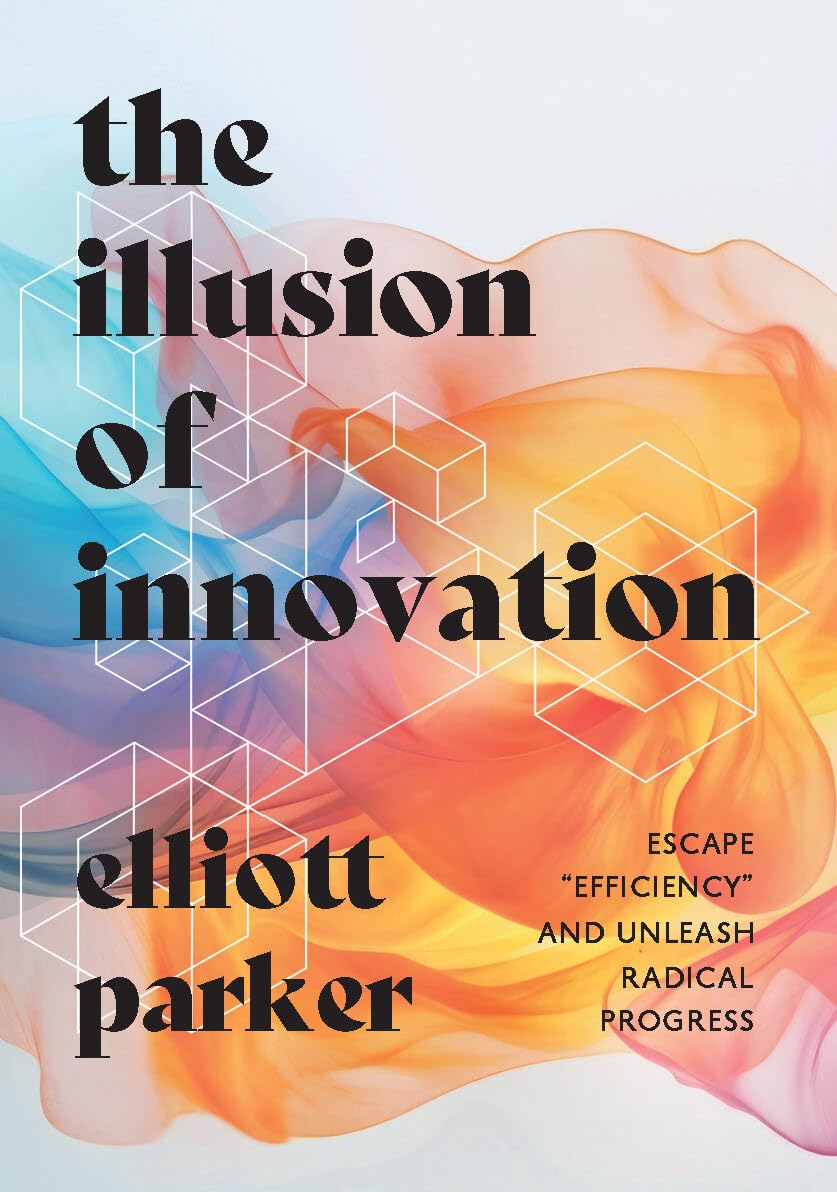Elliott Parker argues corporates are bad at innovation because they're optimised for efficiency. Here's what they should do instead.

Elliott Parker, chief executive of venture studio High Alpha Innovation, has a theory: corporations are worse at innovating than startups because they’re better run.
“Companies are optimised for safety and predictability,” Parker tells Global Corporate Venturing. But the irony is that being better-run makes companies less resilient and more likely to fail.
Covid provided some good examples, he says. “Pre-covid, automotive supplier Valeo had 191 factories around the world producing millions of parts every day,” Parker explains, with just-in-time deliveries. “Then one piece of it breaks and the whole thing crashes down. So in the end that capital efficiency is not resilient. It’s not actually capital-efficient in the long run.”
Governments, too, can fall prey to a perceived notion of safety and endless meetings. The more people are involved, the higher the danger of a vetocracy (a term coined by political scientist Francis Fukuyama where “no” is eventually always the default answer). It means experiments can be almost impossible to run and even obvious positive changes can drown in bureaucracy. Parker gives the example of a suicide safety net installed along the Golden Gate Bridge in San Francisco that took longer to put up (10 years) than it took to build the bridge (four years). “The irony is nobody wants that,” Parker says.

In his book The Illusion of Innovation, published in April, Parker writes that “sooner or later, crisis always comes. Over the long run, resilience beats efficiency and is therefore a more productive objective for scaled organisations. Innovation can (and should) be directed at both efficiency and resilience.”
If this sounds a lot like the idea of the innovator’s dilemma — a term coined by academic and consultant Clayton Christensen to describe how even companies who do everything right can be blindsided by new competitors — that is no accident. Parker worked with Christensen from 2012 to 2018, having gained insider expertise as the manager of business development and new ventures for the pharmaceutical firm Roche earlier in his career.
We still need big companies — but they must build agility
“In some instances slow and deliberate is wonderful,” Parker says. “If I’m a patient going to a hospital, I want that to be as safe and predictable as possible. I don’t want anybody running experiments. But if it gets carried out to the whole system, nothing gets done and nobody’s happy with it. I think this is the most fundamental problem of our age.”
He explains: “Whether it’s government or corporations, we need them to be successful at dealing with challenges. There are certain things that you need scale to be able to do. In the book, I mention the Ford vs Ferrari movie, which is a perfect example of that. The Shelby team, that’s the startup doing scrappy things and moving quickly, is doing amazing things that Ford, this behemoth, can’t do.
“Then there’s a scene where Henry Ford II is showing Caroll Shelby the Ford factory and talks about how during World War II, those factories were converted in a matter of weeks to produce thousands of planes to help win the war. Shelby could not have done that.”
Innovation teams are often too tethered

The big question is, how should companies build the agile resilience that startups excel at? Just creating an “innovation team” at the company rarely works, says Parker.
The most common mistake, Parker says, is when innovation teams are nominally separate “but they still have to use the company’s lawyers, they’re still recruiting people using the HR system. Those seem innocent decisions, but every little bit that is borrowed from the core business comes at a cost … which is the strings that attach that new thing to the core business and make it look like the core does.”
There are examples where companies have been able to innovate successfully, says Parker: “Amazon with AWS, Netflix going from disk to digital to production, IBM going through multiple transformations over its life.”
But these companies succeeded, he says, because either the founder is still running the business and has that risk appetite and ability to drive change. Or, as was the case with IBM, the company is about to go out of business.
According to Parker, such transformation has never occurred because a corporate set up an innovation team. Or at the very least, examples are not readily available, “which is telling”.
The secret to a 1000-year corporate lifespan isn’t size
Sometimes being big can give a company an advantage. Take social media company Meta, for example, which is “spending $40bn a year on AI right now. Even if half of that is wasted, they’re spending $20bn effectively on it. You can’t compete with that,” says Parker.
However, that market gain “is still just going to be a short or medium-term growth and then eventually it’s still going to collapse,” he says.
For the real secret to a multi-century corporate lifespan we need to look to Japan, says Parker. Half the companies that have lasted more than 200 years are based in Japan — including record-holder construction firm Kongō Gumi, which survived as a standalone business for over 1,400 years until an acquisition by its peer Takamatsu Construction Group in 2006. He attributes this to the Japanese concept of sanpo yoshi (“three-way satisfaction”).
Sanpo yoshi is “this realisation that if you’re going to run a business, your employees need to benefit, your shareholders need to benefit, your customers need to benefit, society needs to benefit,” Parker says. “As long as you’re producing a societal surplus, society is going to allow you to continue to run. When you’re extracting too much, society is going to find a way not to allow you to operate anymore. That might look like the government shutting down a monopoly. That might look like new regulations,” he explains.
Parker claims “monopolies don’t endure”, adding that “a mistake a lot of companies make, and we’re taught this in business school, is to maximise profitability. That’s not good advice for endurance or long-term resilience. You want to make enough, not too much.”
CVC investing is good — venture building is better
Acquiring startups is another way for corporates to bring in innovation, says Parker, who adds that “every large organisation should be making corporate venture capital investments. I firmly believe that. It’s a fantastic way to see what’s cutting edge and get access to essentially buy options on the possibilities.”

However, corporate investing must be strategically rather than financially focused. “Any financial return from investment capital or venture investment for a large company is a drop in the bucket, with rare exceptions… It’s the strategic return that matters,” he says.
Some corporate VC teams do this very well but “most of the time, I find that the corporate venture team is having trouble closing that strategic loop,” he adds.
Corporate investing is also fundamentally reactive, he argues. “You are waiting for somebody else to come up with an idea for a company, launch that company, and for you to like it enough or find it close enough to your thesis that you’re willing to invest.”
Really, he says (perhaps unsurprisingly for someone who runs a venture studio) corporations should be building their own ventures.
“Large corporations have a very good understanding of what should exist in the world and what the problems are. There are instances when it doesn’t make sense to wait. These large corporations should go build it proactively rather than wait for somebody else to do it and then invest in it,” he says.
More experiments — fast, cheap and weird
One of the corporates that Parker has worked with is the animal pharmaceutical firm Elanco. Dairy farmers told the team that corporations would often approach them to purchase their carbon credits and that the farmers themselves had to do annual environmental impact reports. The solution Parker and Elanco came up with was a new venture, Athian, that could validate activity on the farms and then generate carbon credits from it.
It may not sound like any of that benefits Elanco’s core business but, Parker says, “Elanco has a new feed additive that reduces the carbon output of dairy cows. The problem is it’s too expensive for dairy farmers. But Elanco can go to these dairy farmers and say: ’using this feed additive will allow you to create carbon credit. Athian can handle that for you and sell the credit for you. So not only does it dramatically reduce the cost of this feed additive, there are potential scenarios where you may earn money from using our product.’
“It opens up a whole new path for Elanco in terms of their R&D pipeline and price ceiling on what products make sense economically because there’s a whole new way to sell them.”
“Outside venture building is the best solution to the innovator’s dilemma that I’ve seen so far and I’ve been looking for 25 years.”
Parker adds: “These startups go fast, they learn, adjust, pivot, and then the corporation takes whatever the startups learn and uses it with the massive lever of their multibillion-dollar organisation to do things differently. That outside venture building is the best solution to the innovator’s dilemma that I’ve seen so far and I’ve been looking for 25 years.”
He cautions: “It’s not perfect. It’s not a silver bullet. It doesn’t do everything right. But organisations, corporations need to do it.”
Parker says this venture building works in every sector and, perhaps surprisingly, works best in highly regulated industries. “You need to make mistakes to learn and to innovate. In healthcare, it’s harder than most industries to innovate for that reason. Health system can’t take chances. These larger existing incumbents are constrained, and rightly so. You have to produce new structures that can go try these things and make mistakes in a safe environment where people aren’t going to get hurt or bad things aren’t going to happen.”
Many of these experiments will fail, of course, so Parker says that corporates need to run experiments as a power law asset class — with a large number of projects at any given time.
“It is hard to predict ahead of time which insights are going to lead you into new paths for growth,” he says. “You have to gather as many insights as possible. That is why you have to do more experiments — fast, cheap and weird. That is the way to uncover anomalies and surprises. It will drive the change that you seek and need.”








